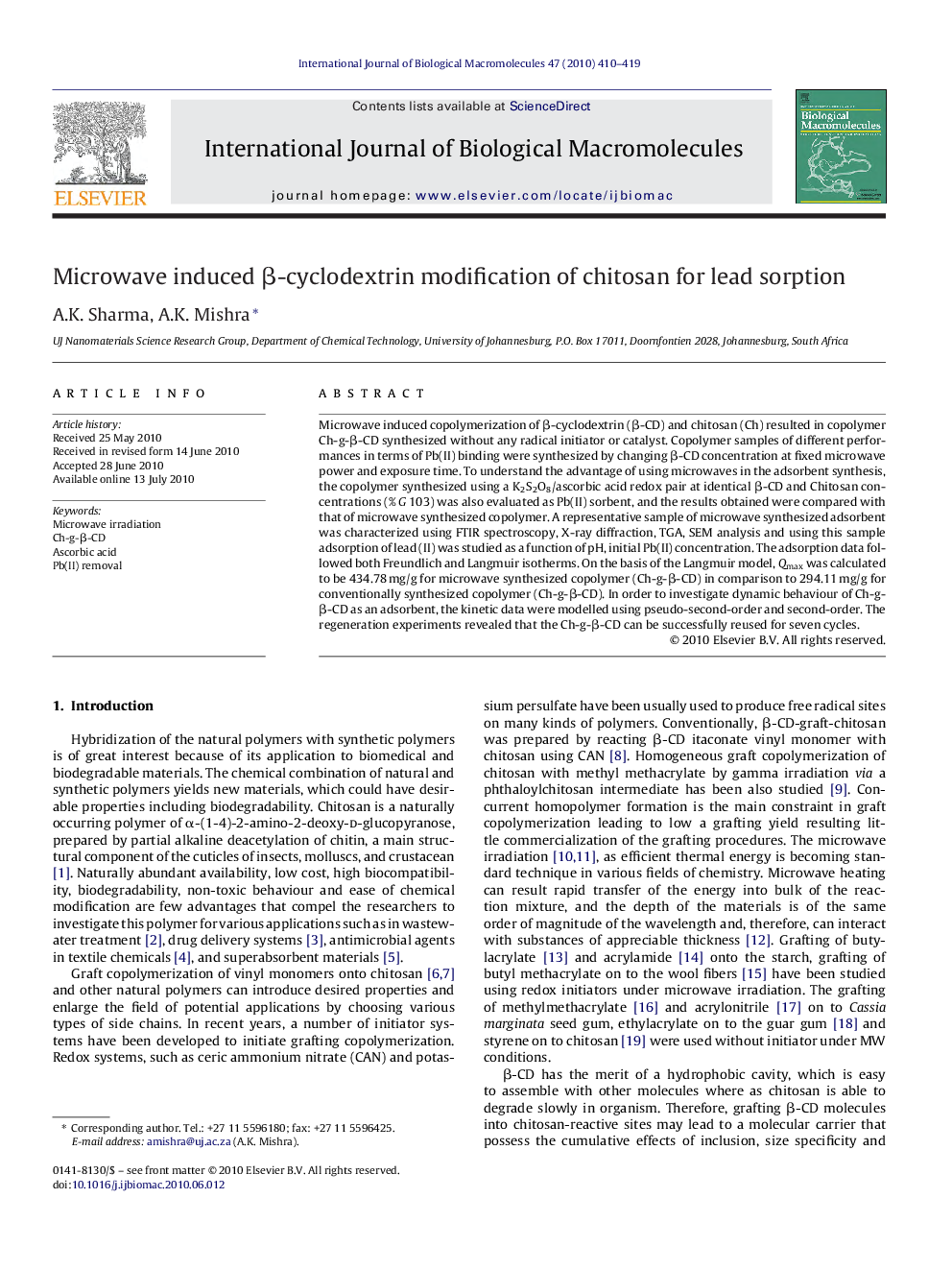| کد مقاله | کد نشریه | سال انتشار | مقاله انگلیسی | نسخه تمام متن |
|---|---|---|---|---|
| 1987574 | 1540290 | 2010 | 10 صفحه PDF | دانلود رایگان |

Microwave induced copolymerization of β-cyclodextrin (β-CD) and chitosan (Ch) resulted in copolymer Ch-g-β-CD synthesized without any radical initiator or catalyst. Copolymer samples of different performances in terms of Pb(II) binding were synthesized by changing β-CD concentration at fixed microwave power and exposure time. To understand the advantage of using microwaves in the adsorbent synthesis, the copolymer synthesized using a K2S2O8/ascorbic acid redox pair at identical β-CD and Chitosan concentrations (% G 103) was also evaluated as Pb(II) sorbent, and the results obtained were compared with that of microwave synthesized copolymer. A representative sample of microwave synthesized adsorbent was characterized using FTIR spectroscopy, X-ray diffraction, TGA, SEM analysis and using this sample adsorption of lead (II) was studied as a function of pH, initial Pb(II) concentration. The adsorption data followed both Freundlich and Langmuir isotherms. On the basis of the Langmuir model, Qmax was calculated to be 434.78 mg/g for microwave synthesized copolymer (Ch-g-β-CD) in comparison to 294.11 mg/g for conventionally synthesized copolymer (Ch-g-β-CD). In order to investigate dynamic behaviour of Ch-g-β-CD as an adsorbent, the kinetic data were modelled using pseudo-second-order and second-order. The regeneration experiments revealed that the Ch-g-β-CD can be successfully reused for seven cycles.
Journal: International Journal of Biological Macromolecules - Volume 47, Issue 3, 1 October 2010, Pages 410–419